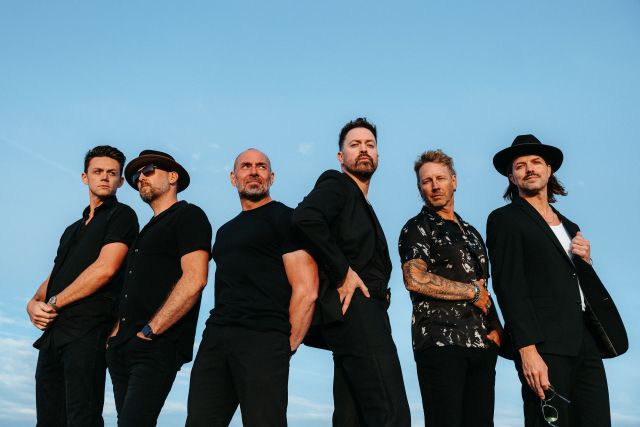In virtual play, harassment is all too real
Published 5:00 am Sunday, August 12, 2012
When Miranda Pakozdi entered the “Cross Assault” video game tournament this year, she knew she had a slim chance of winning the $25,000 prize. But she was ready to compete, and promised fans watching online that she would train just as hard as, if not harder than, anyone else. Over six days of competition, though, her team’s coach, Aris Bakhtanians, interrogated her on camera about her bra size, said “take off your shirt” and focused the team’s webcam on her chest, feet and legs. He leaned in over her shoulder and smelled her.
Pakozdi, 25, an experienced gamer, has said she always expects a certain amount of trash talk. But as the only woman on the team, this was too much, especially from her coach, she said. It was after she overheard Bakhtanians defending sexual harassment as part of “the fighting game community” that she forfeited the game.
Sexism, racism, homophobia and general name-calling are long-standing facts of life in certain corners of online video games. But the “Cross Assault” episode was the first of a series this year that have exposed the severity of the harassment that many gamers, especially women, experience in virtual gaming communities.
And a backlash — on Twitter, in videos, on blogs and even in an online comic strip — has moved the issue beyond endless debate among gaming insiders to more public calls for change.
Executives in the $25 billion-a-year industry are taking note. One game designer’s online call for civility prompted a meeting with Microsoft executives about how to better police Xbox Live. In February, shortly after the “Cross Assault” tournament, LevelUp, an Internet broadcaster of gaming events, barred two commentators who made light of sexual harassment on camera and issued a formal apology, including statements from the commentators.
Even so, Tom Cannon, co-founder of the largest fighting game tournament, EVO, pulled his company’s sponsorship of the weekly LevelUp series, saying that “we cannot continue to let ignorant, hateful speech slide.”
“The nasty undercurrent in the scene isn’t a joke or a meme,” he said. “It’s something we need to fix.”
Bakhtanians, whose actions during the “Cross Assault” tournament were captured on video, later issued a statement in which he apologized if he had offended anyone. He also blamed “my own inability in the heat of the moment to defend myself and the community I have loved for over 15 years.”
But the issues raised by the “Cross Assault” episode gained more attention with Anita Sarkeesian’s campaign in May to raise $6,000 on Kickstarter to document how women are portrayed in video games. Her YouTube and Facebook pages were instantly flooded with hate-filled comments. People tried to hack her online accounts. She received violent personal threats.
Sarkeesian responded by documenting the harassment, posting online the doctored, pornographic images of herself that her detractors had created. Supporters of her efforts, aghast, donated more than $150,000, further angering her critics. A man from Ontario created an Internet game where players could “punch” her, layering bruises and cuts on her image until the screen turns red.
“The gaming industry is actually in the process of changing,” Sarkeesian said. “That’s a really positive thing, but I think there is a small group of male gamers who feel like gaming belongs to them, and are really terrified of that change happening.”
When Sam Killermann, a gamer in Austin, Texas, saw the reaction to Sarkeesian’s project, something “broke through,” he said. He began a campaign for “Gamers Against Bigotry,” asking people to sign a pledge supporting more positive behavior. The site received 1,500 pledges before it was hacked, erasing its list of names.
Like Sarkeesian, many women gamers are documenting their experiences on blogs like “Fat, Ugly or Slutty” (whose name comes from the typical insults women receive while playing against others online). It cheekily catalogs the slurs, threats and come-ons women receive while playing games like “Resident Evil” or “Gears of War 3.”
Jessica Hammer, a longtime player of video games and a researcher at Columbia University, said the percentage of women playing such games online ranges from 12 percent to close to half, depending on the game type. Industry statistics from the Entertainment Software Association say 47 percent of game players are women, but that number is frequently viewed as so all-encompassing as to be meaningless, bundling Solitaire alongside “Diablo III.”
Women report greater levels of harassment in more competitive games involving strangers. Some abandon anonymous play for safer communities or “clans” where good behavior is the norm.
In other game communities, however, sexual threats, taunts and come-ons are common, as is criticism that women’s presence is “distracting” or that they are simply trying to seek attention. Some have been offered money or virtual “gold” for online sex. Some have been stalked online and in person.
Stephen Toulouse, who was the head of enforcement for Xbox Live from 2007 until February, policed the most egregious behavior on the network, owned by Microsoft. And women were the most frequent target of harassment, he said. In that role, Toulouse experienced the wrath of angry gamers firsthand, who figured out where he lived, then called the police with false reports about trouble at his house (more than once, SWAT teams were sent).
If players were reported for bad behavior, they could be disciplined by being muted on voice chat or barred temporarily. At least once a day, Toulouse said, the company blocked a specific console’s serial number from ever accessing the network again.
But policing the 2 million or 3 million players who are active on Xbox Live at any given time is hard. Just as on the broader Internet, there are people who delight in piquing anger or frustration in others.
Still, says James Portnow, a game designer who has worked on titles including “Call of Duty” and “Farmville,” it’s a problem that needs to be addressed industrywide. “For the longest time, people have seen games as a children’s pastime, and we as an industry have stood behind this idea. But that’s not true any longer. We are a real mass medium, and we have a real effect on the culture. We have to take a step beyond this idea that nothing we could possibly do could be negative, or hurt people.”






